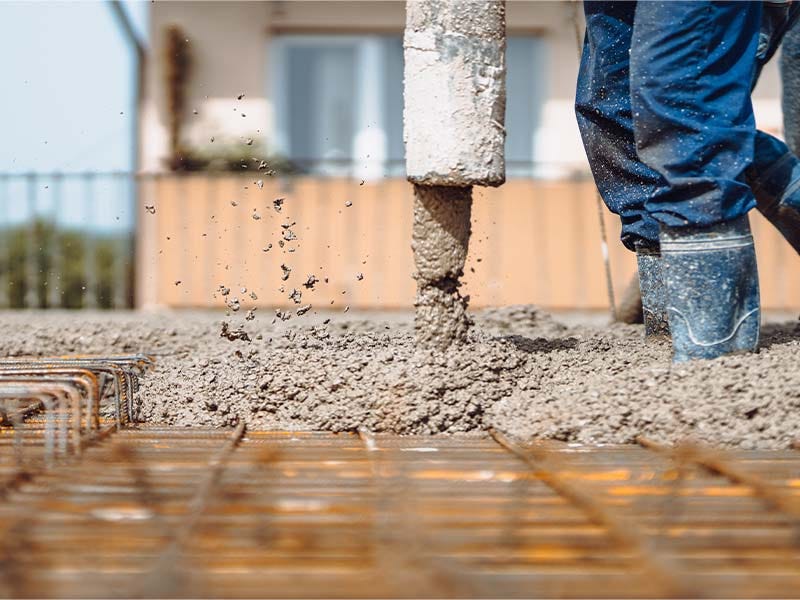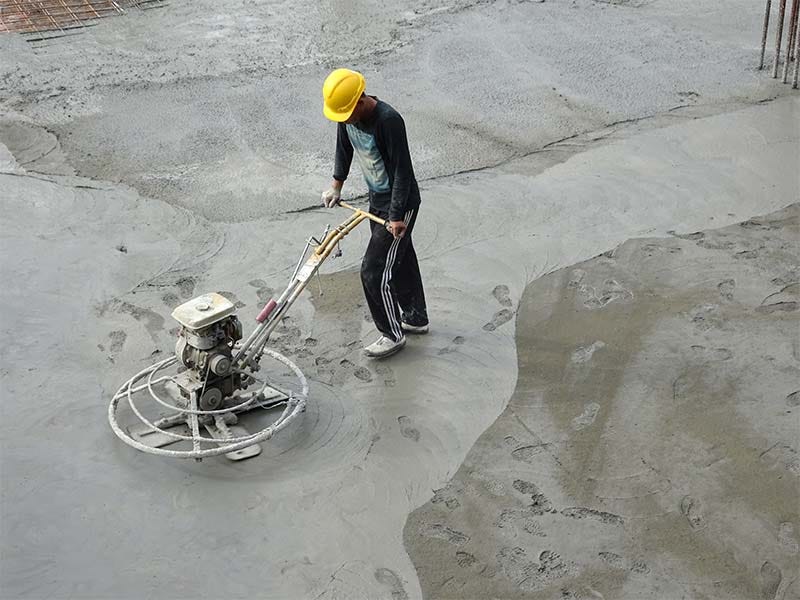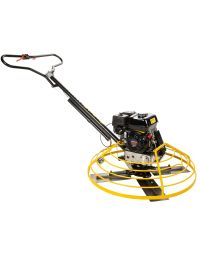

If you're new to working with concrete or ready to level up to power tools, a walk-behind power trowel is the next piece of equipment you need for finishing a project. In this guide, we'll give you the basics of power troweling concrete and common mistakes to avoid so you can get up to speed and master the art quickly.
What Is a Power Trowel?
A power trowel is a piece of equipment used to squeeze out excess water from freshly poured concrete. It also helps to consolidate it and smooth the surface. The machine has a control handle, an engine, a rotor, blades, and a safety cage or shroud that protects the blades and the operator.
There are three types of power trowel blades and attachments that you can use:
- A float pan (or float blades) allows you to start to work a little sooner because it's made to distribute the machine's weight more evenly and float across the surface of the concrete.
- Combo blades are a hybrid of float blades and finishing blades. These have a little more flexibility than finishing blades.
- Finishing blades are narrower and more rigid than the other blades and are designed to put a harder edge on the surface.


How to Use a Power Trowel
Before you turn on your power trowel, you'll want to be sure much of the excess water from the concrete has evaporated. Depending on the temperature and humidity, freshly poured concrete may take up to four hours to set enough to safely use a trowel without sinking. A good rule of thumb is that if your shoes leave 1/8 inch or less of an impression in the concrete, you're ready to trowel, but you don't want it too dry. So, check the moisture level regularly.
Read the manufacturer's instructions for your specific power trowel before tackling your first job. Know where the safety mechanism is and how to steer it. Most walk-behind finishing trowels are controlled by pressure on the handle. Pulling up on the handle will turn it to the left, and pushing it down will turn it to the right. Be aware that there may be a slight delay between your motion and the machine's response.
If your trowel has different speeds, it's always best to start slowly and increase your speed as you get more comfortable with the machine. The same is true for using blade angles to apply pressure - start at a lower angle and work your way up.
Keep the machine moving at a steady pace, work in straight lines, and avoid sudden turns and stops. Many jobs will require several passes, including one or two with the floater pan and up to five with finishing blades. Every job is different, and with experience, you'll become a good judge of how long it should take.
Once you have a nice smooth surface, remove the blades and clean them immediately so they're ready for your next project. You don't want buildup on the machine or the blades because that will shorten the life of your power trowel and cause uneven finishes on your next job.
Avoid These Common Power Trowel Mistakes
- Starting the machine at full speed. If you start the machine at high speed, it can cause the blades to dig into the concrete and create gouges. Always start slow and work your way up.
- Starting too soon or too late. If you start troweling while the concrete is too wet, you'll end up with an uneven finish or soft concrete. If you wait until it's too dry, the surface can become too hard to finish.
- Forgetting to check the angle of the blades. The pitch of the blades determines the depth of the finish, and not checking the pitch can result in an uneven or incorrect finish depth. Always check the pitch of the blades before starting the machine.





